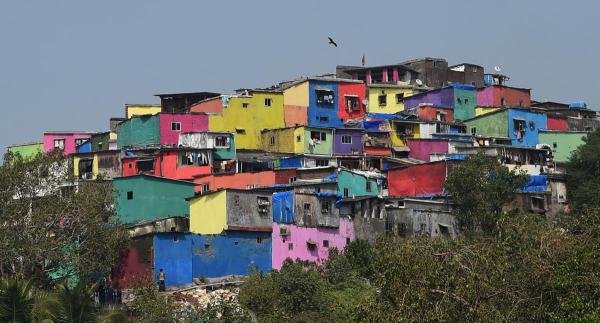As in Mumbai’s Dharavi, in Delhi’s JJ clusters, practising social distancing isn’t possible in absence of basic amenities.
New Delhi: Asia’s largest slum Dharavi in Mumbai is a ticking time bomb in the wake of the coronavirus outbreak, with three coronavirus positive cases reported from these 613 hectares of land where over 15 lakh people stay. In this week, at least three positive cases of coronavirus in Mumbai—in some way or other connected to Dharavi—has emerged, raising serious concerns about community spread.
The reason, however, is the high population density which makes “social distancing” nearly unthinkable in Dharavi.
Dr Rahul Kulkarni, a surgeon from Thane district of Maharashtra, said that the importance of sensitisation even if “social distancing” is not easy to achieve. “Most of the slum dwellers live in clusters which makes them more vulnerable to the virus. In such a situation, awareness and sensitisation can only help to curb the spread of virus at the community level,” Kulkarni told The Sunday Guardian. Prasad Subramaniam, a social activist who has been working in Mumbai’s slums since the outbreak of Covid-19, expressed a similar concern while speaking to The Sunday Guardian. “In Mumbai’s slums, people live in tiny clusters with a very limited space. They also lack basic facilities such as proper ventilation and water. In such a situation, social distancing as advised by health experts is very unlikely,” he said.
Dr Rahul Kulkarni, a surgeon from Thane district of Maharashtra, said that the importance of sensitisation even if “social distancing” is not easy to achieve. “Most of the slum dwellers live in clusters which makes them more vulnerable to the virus. In such a situation, awareness and sensitisation can only help to curb the spread of virus at the community level,” Kulkarni told The Sunday Guardian. Prasad Subramaniam, a social activist who has been working in Mumbai’s slums since the outbreak of Covid-19, expressed a similar concern while speaking to The Sunday Guardian. “In Mumbai’s slums, people live in tiny clusters with a very limited space. They also lack basic facilities such as proper ventilation and water. In such a situation, social distancing as advised by health experts is very unlikely,” he said.
While the government has been denying community transmission of Covid-19, one advice that has been reiterated from time to time is to wash hands with soap and water to reduce the risk of getting infected.
The World Health Organization has also chalked out a number of personal protective measures which strongly emphasise “social distancing” as an effective measure to prevent community transmission of the pandemic.
Like residents of Dharavi, for many residents of Delhi’s jhuggi jhopri (JJ) clusters, it is not possible to practice any of the protective measures against Covid-19.
The World Health Organization has also chalked out a number of personal protective measures which strongly emphasise “social distancing” as an effective measure to prevent community transmission of the pandemic.
Like residents of Dharavi, for many residents of Delhi’s jhuggi jhopri (JJ) clusters, it is not possible to practice any of the protective measures against Covid-19.
In South Delhi’s Jai Hind Camp, there is no household water connection and people depend on Delhi Jal Board tankers for day to day use of water. “The shortage of water in this camp is such that we have divided the households into groups and each group gets chance to fill in their share of water only once in a week. In such a situation, it is really hard to maintain the hygiene prescribed by health experts,” said Noor, a resident of Jai Hind Camp.
For over 2,000 people who reside in the Jai Hind Camp, there is only one toilet block where hundreds of men and children defecate, making social distancing, and washing of hands next to impossible for the dwellers. “Frequent hand washing is a luxury here and use of sanitizers is unaffordable,” Noor added.
In most such jhuggis in Delhi, where population density is higher than any other locality of the national capital, social distancing is impossible. “Keeping social distance is impractical in this camp. Even if you stay inside your house, that means you are staying with six people in the same room. Is there any point of such distancing?” said Sushma, resident of Chanakyapuri’s Sanjay Camp.
In Sanjay Camp, if one walks down the narrow lanes, one can hardly breathe due to the stinking sewer smell that permeates the air. The only toilet in the camp is used by over hundreds of families. Though there is a temporary mobile toilet on the main road, children very often defecate in small open spaces which makes maintaining respiratory hygiene a difficult task.
“Hygiene is important, but to achieve that in this camp there are a lot of things to be done—from more toilet facilities to household water connectivity. Without those facilities, maintenance of hygiene is near impossible,” Sushma added.
Like Jai Hind camp and Sanjay camp, in most JJ clusters of Delhi, maintenance of hygiene and social distancing as a protective measure against Covid-19 is the biggest challenge for dwellers, which in turn makes them more vulnerable to the pandemic.
Adding to their woes, these JJ clusters suffer the worst in summer as severe water crisis hits Delhi. With pipelines drying up and non-functional government bore-wells, the photos of residents waiting for water tankers with empty drums, can be found in all national dailies.
As hand hygiene videos are doing rounds on WhatsApp, for many of the dwellers, access to clean water is now a main concern.
“People are worried and want to do things to prevent the spread of the virus. But, there is a little we can do within our existing limited facilities,” Noor said.
- Advertisement -

